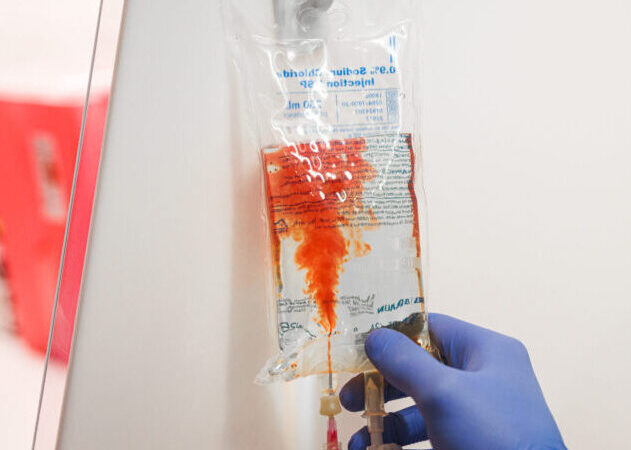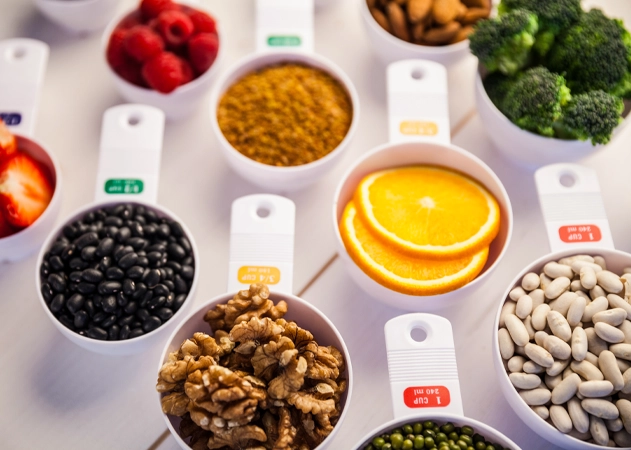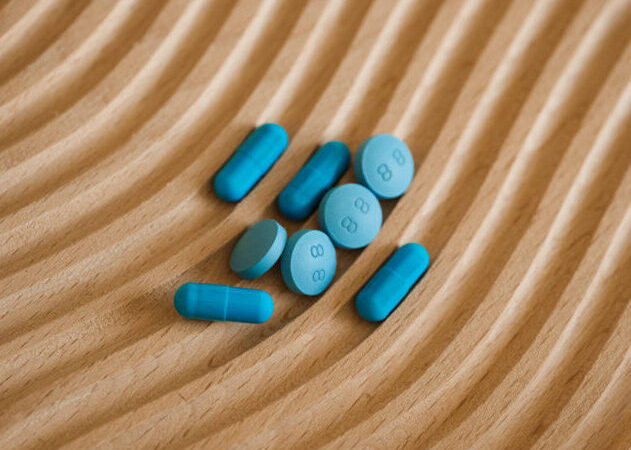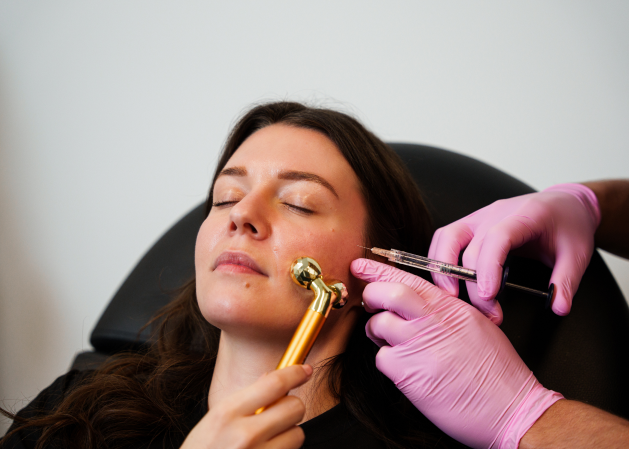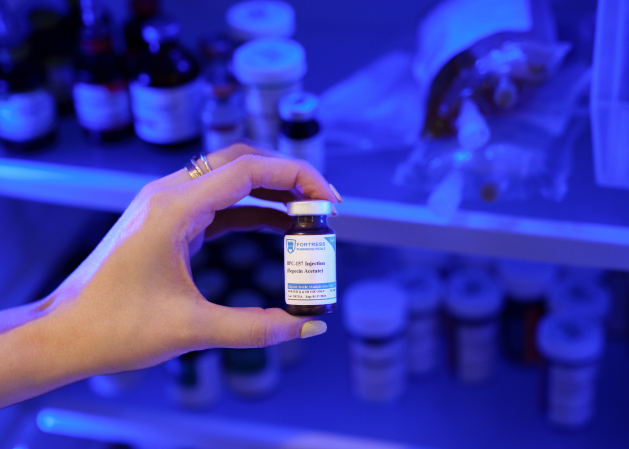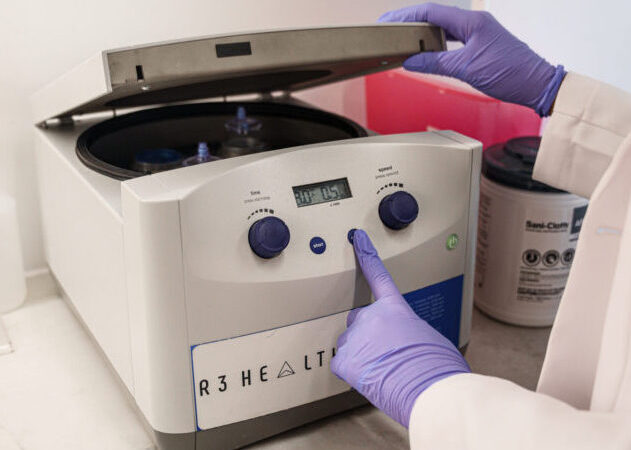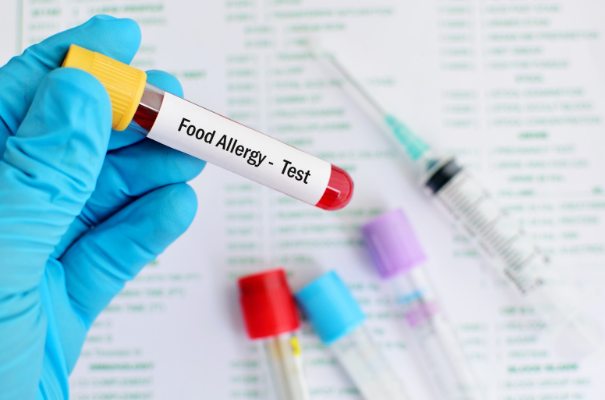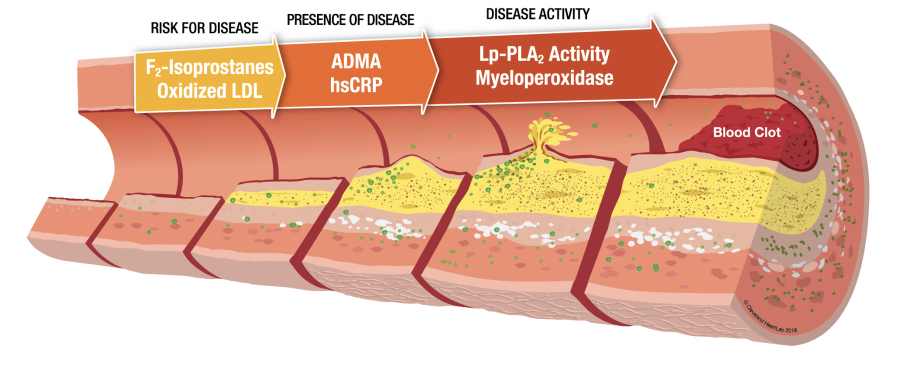FAST FAQs
Below are the most commons questions we receive here at R3 Health.
Are IgG reactions the result or the cause of gut-based permeability?
- IgG reactions are both the cause and the result of gut-based permeability. One way we develop IgG reactions is when the gut becomes more compromised or permeable. This allows for larger molecules than normal to “leak” through the gut. These larger molecules look antigenic to the immune system. T-cells become sensitized and begin to make an immune response or produce antibodies. However, this is not the only way one can become sensitive to foods. Improper immune queuing in the GI tract, specifically in cells called the Peyer’s patches, can also cause this too. Once an IgG reaction begins, it increases production of histamine and inflammation. This inflammation continues to damage the gut, thereby contributing to permeability. The best way to reduce gut-based inflammation is to remove offending foods and heal the gut.
What is the difference between gluten and wheat on the total allergy and sensitivity panel report?
- Gluten is in whole wheat; however, wheat has other proteins that you could react to. It is possible for someone to come back positive to wheat and not gluten. That would mean you are reactive to other proteins in the wheat instead of the gluten. If you come back positive to gluten and not wheat, it is because the other proteins in wheat can obscure a bit of the binding to gluten, so it is also isolated and run separately. We do this to catch smaller gluten reactions that did not show up because of other proteins obscuring reactions and because you will capture lower-level reactions that are only seen when gluten is isolated. Because it is such an antigenic molecule, it is important to see if even minimal amounts will trigger reactivity.
What are some treatments I should consider to improve my allergies and sensitivities?
- The elimination diet is the best way to calm the inflammation and over-activity of the immune system to those reactive foods. All treatments designed to decrease leaky gut can be useful, such as fiber, vitamin A, fish oils, aloe, licorice, glutamine, probiotics, demulcents, immunoglobulins, and functional foods.
What can I do in addition to elimination of foods?
- Consider immunoglobulins to help with immune system function and build healthy gut lining.
- Immunoglobulin usage helps a person to regain tolerance to foods.
- Therapies such as glutamine, short-chain fatty acids, probiotics, digestive enzymes, and vitamin A will also be helpful in regaining a healthy gut lining/immune tolerance.
- For high complement protein findings, consider curcuminoids from turmeric as part of the treatment to help reduce complement activation. Also consider: antioxidants from vitamins D, C, and A, zinc, quercetin, and CBD.
I react to gluten, but it did not show up on my test. Why?
- Reactions to gluten could be because of allergies or sensitivities, but there are also several other reasons you may be symptomatic from gluten outside of sensitivities. For example, gluten more than other protein found in grains decreases the tryptophan-to-serotonin ratio, making production of these neurotransmitters more difficult. Also, gluten can often be contaminated with bromides that decreases other important nutrients like iodine and contain pesticides like glyphosate. Gluten can often by moldy as commercial grains are measured for ppm (parts per million) of aflatoxin and are generally positive for this contaminate.
Why would I be reactive to something I never eat?
- It could have a cross-reaction with something in the environment to the food. For example, latex can cause banana allergies because they are in the same family.
- Sometimes there may be trace amounts of foods in other sources you are not aware of.
- There can be cross-reactions from other foods in the family of the food you are showing a reaction to.
What should I do if mold comes back positive?
- The total allergy and sensitivity panel tells you that there is a response to mold, but it doesn’t tell you where exposure is coming from. Exposure can come from foods or the environment. To get a better picture of how mold is shifting immune function, markers such as TGF-Beta can be measured to see how immunoreactive a patient is to the exposure to gauge how much change must be done. Mold testing includes: aspergillus (A. oryzae, A. niger, A. repent, A. terries). You may also consider testing environmental antigens.
- Key foods to avoid for elevated mold reaction are moldy cheeses (e.g., blue cheese), peanuts, melons, and sake. For patients with severe reactions and active symptoms, a more restrictive mold diet may be needed. Consider using Konjac Fiber, which binds to aflatoxin. Ensure all probiotics are not processed using a mold substrate.
What if foods bother me, but there is no reaction shown on the test?
- Other factors can cause reactions to foods besides allergies. For example, gluten can interfere with ability to convert amino acids into neurotransmitters. This can make us feel depressed and achy. However, this is not an allergy or sensitivity. Other examples of this are reactions that are not secondary to things like platelet activating factor which may cause an adverse response but is not an allergy or sensitivity.
- Another reaction may be certain characteristics of foods such as being high in histamine. This can cause discomfort but is not an allergic reaction.
What is the difference between an allergy and a sensitivity?
- An allergy is mediated by IgE antibodies and creates an immediate reaction with symptoms presenting within 1-3 hours. A sensitivity is created by IgG antibodies and creates a delayed response. Symptoms can occur 3-72 hours after exposure. While these general traits hold true, there are also times when IgG can amplify IgE reactions. Some examples of this are if there is a very high level of IgG, it can have more of an immediate reaction too. They create independent reactions but can also influence each other. IgG is more typically a delayed reaction, but if high enough titers are present, it too can react within a few hours.
Is IgG4 good or bad?
- IgG4 is by and large good, as it blunts an IgE response and reduces anaphylactic shock risk. In fact, desensitization injections and drops work by this mechanism of increasing IgG4 to induce tolerance. However, there are a handful of conditions that increase IgG4 reactions and if a patient has one of these conditions it may be helpful to remove foods that are provoking an IgG4 reaction. In non-responsive patients it is also reasonable to do a clinical trial of removal of IgG4 especially if removal of other foods did not create the improvement anticipated. IgG4 plays multiple roles in immune function and must be carefully evaluated with each patient.
What are the limitations of only testing total IgG?
- Only testing IgG is a bit like knowing total cholesterol, but not knowing how much HDL/good or LDL/bad cholesterol you have. The reason for this is that different IgG antibodies do different things depending on their subtype. IgG4 decreases IgE or allergic reactions. IgGI-III increase inflammation 3-72 hours after exposure. Also, different subtypes are increased in certain pathologies. For example, while IgG4 is generally good, there are a handful of pathologies where it is of concern such as autoimmune hypothyroidism and eosinophilic esophagitis.
My patient had a severe reaction in the past to a particular food, but this did not show up on the FAST results. Why?
- The FAST serum test was designed to report antibodies in high numbers currently in the blood. This would identify the culprit of existing symptoms the patient is having in response to foods currently or recently eaten. Our test does not expose the patient to a known or potential antigen to induce a response, instead it tests for existing antibodies circulating in the patient’s system.
- IgE has a short half-life, so recent exposure ad response would be needed for the results to display a reaction. This is true for all antibodies being tested, recent exposure would be needed to drive a reactive response.
- If there is a particular food that is of concern your patient may ingest a serving of this food within a week of testing. If your patient cannot safely perform a challenge with the offending food because there is a risk of anaphylaxis, we would recommend requesting a skin prick test in an office under the supervision of medical staff.
FAST FAQs
Below are the most commons questions we receive here at R3 Health.
Are IgG reactions the result or the cause of gut-based permeability?
- IgG reactions are both the cause and the result of gut-based permeability. One way we develop IgG reactions is when the gut becomes more compromised or permeable. This allows for larger molecules than normal to “leak” through the gut. These larger molecules look antigenic to the immune system. T-cells become sensitized and begin to make an immune response or produce antibodies. However, this is not the only way one can become sensitive to foods. Improper immune queuing in the GI tract, specifically in cells called the Peyer’s patches, can also cause this too. Once an IgG reaction begins, it increases production of histamine and inflammation. This inflammation continues to damage the gut, thereby contributing to permeability. The best way to reduce gut-based inflammation is to remove offending foods and heal the gut.
What is the difference between gluten and wheat on the total allergy and sensitivity panel report?
- Gluten is in whole wheat; however, wheat has other proteins that you could react to. It is possible for someone to come back positive to wheat and not gluten. That would mean you are reactive to other proteins in the wheat instead of the gluten. If you come back positive to gluten and not wheat, it is because the other proteins in wheat can obscure a bit of the binding to gluten, so it is also isolated and run separately. We do this to catch smaller gluten reactions that did not show up because of other proteins obscuring reactions and because you will capture lower-level reactions that are only seen when gluten is isolated. Because it is such an antigenic molecule, it is important to see if even minimal amounts will trigger reactivity.
What are some treatments I should consider to improve my allergies and sensitivities?
- The elimination diet is the best way to calm the inflammation and over-activity of the immune system to those reactive foods. All treatments designed to decrease leaky gut can be useful, such as fiber, vitamin A, fish oils, aloe, licorice, glutamine, probiotics, demulcents, immunoglobulins, and functional foods.
What can I do in addition to elimination of foods?
- Consider immunoglobulins to help with immune system function and build healthy gut lining.
- Immunoglobulin usage helps a person to regain tolerance to foods.
- Therapies such as glutamine, short-chain fatty acids, probiotics, digestive enzymes, and vitamin A will also be helpful in regaining a healthy gut lining/immune tolerance.
- For high complement protein findings, consider curcuminoids from turmeric as part of the treatment to help reduce complement activation. Also consider: antioxidants from vitamins D, C, and A, zinc, quercetin, and CBD.
I react to gluten, but it did not show up on my test. Why?
- Reactions to gluten could be because of allergies or sensitivities, but there are also several other reasons you may be symptomatic from gluten outside of sensitivities. For example, gluten more than other protein found in grains decreases the tryptophan-to-serotonin ratio, making production of these neurotransmitters more difficult. Also, gluten can often be contaminated with bromides that decreases other important nutrients like iodine and contain pesticides like glyphosate. Gluten can often by moldy as commercial grains are measured for ppm (parts per million) of aflatoxin and are generally positive for this contaminate.
Why would I be reactive to something I never eat?
- It could have a cross-reaction with something in the environment to the food. For example, latex can cause banana allergies because they are in the same family.
- Sometimes there may be trace amounts of foods in other sources you are not aware of.
- There can be cross-reactions from other foods in the family of the food you are showing a reaction to.
What should I do if mold comes back positive?
- The total allergy and sensitivity panel tells you that there is a response to mold, but it doesn’t tell you where exposure is coming from. Exposure can come from foods or the environment. To get a better picture of how mold is shifting immune function, markers such as TGF-Beta can be measured to see how immunoreactive a patient is to the exposure to gauge how much change must be done. Mold testing includes: aspergillus (A. oryzae, A. niger, A. repent, A. terries). You may also consider testing environmental antigens.
- Key foods to avoid for elevated mold reaction are moldy cheeses (e.g., blue cheese), peanuts, melons, and sake. For patients with severe reactions and active symptoms, a more restrictive mold diet may be needed. Consider using Konjac Fiber, which binds to aflatoxin. Ensure all probiotics are not processed using a mold substrate.
What if foods bother me, but there is no reaction shown on the test?
- Other factors can cause reactions to foods besides allergies. For example, gluten can interfere with ability to convert amino acids into neurotransmitters. This can make us feel depressed and achy. However, this is not an allergy or sensitivity. Other examples of this are reactions that are not secondary to things like platelet activating factor which may cause an adverse response but is not an allergy or sensitivity.
- Another reaction may be certain characteristics of foods such as being high in histamine. This can cause discomfort but is not an allergic reaction.
What is the difference between an allergy and a sensitivity?
- An allergy is mediated by IgE antibodies and creates an immediate reaction with symptoms presenting within 1-3 hours. A sensitivity is created by IgG antibodies and creates a delayed response. Symptoms can occur 3-72 hours after exposure. While these general traits hold true, there are also times when IgG can amplify IgE reactions. Some examples of this are if there is a very high level of IgG, it can have more of an immediate reaction too. They create independent reactions but can also influence each other. IgG is more typically a delayed reaction, but if high enough titers are present, it too can react within a few hours.
Is IgG4 good or bad?
- IgG4 is by and large good, as it blunts an IgE response and reduces anaphylactic shock risk. In fact, desensitization injections and drops work by this mechanism of increasing IgG4 to induce tolerance. However, there are a handful of conditions that increase IgG4 reactions and if a patient has one of these conditions it may be helpful to remove foods that are provoking an IgG4 reaction. In non-responsive patients it is also reasonable to do a clinical trial of removal of IgG4 especially if removal of other foods did not create the improvement anticipated. IgG4 plays multiple roles in immune function and must be carefully evaluated with each patient.
What are the limitations of only testing total IgG?
- Only testing IgG is a bit like knowing total cholesterol, but not knowing how much HDL/good or LDL/bad cholesterol you have. The reason for this is that different IgG antibodies do different things depending on their subtype. IgG4 decreases IgE or allergic reactions. IgGI-III increase inflammation 3-72 hours after exposure. Also, different subtypes are increased in certain pathologies. For example, while IgG4 is generally good, there are a handful of pathologies where it is of concern such as autoimmune hypothyroidism and eosinophilic esophagitis.
My patient had a severe reaction in the past to a particular food, but this did not show up on the FAST results. Why?
- The FAST serum test was designed to report antibodies in high numbers currently in the blood. This would identify the culprit of existing symptoms the patient is having in response to foods currently or recently eaten. Our test does not expose the patient to a known or potential antigen to induce a response, instead it tests for existing antibodies circulating in the patient’s system.
- IgE has a short half-life, so recent exposure ad response would be needed for the results to display a reaction. This is true for all antibodies being tested, recent exposure would be needed to drive a reactive response.
- If there is a particular food that is of concern your patient may ingest a serving of this food within a week of testing. If your patient cannot safely perform a challenge with the offending food because there is a risk of anaphylaxis, we would recommend requesting a skin prick test in an office under the supervision of medical staff.



